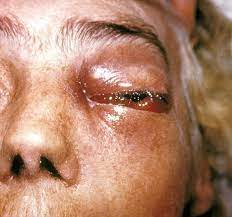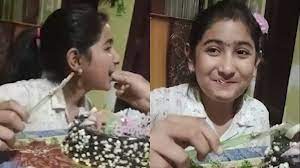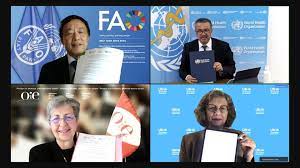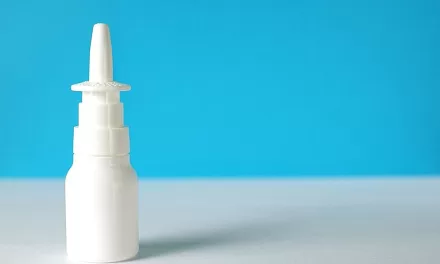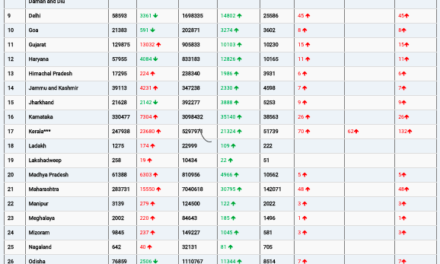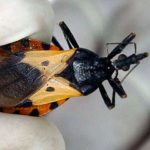Union Health Secretary Shri Rajesh Bhushan along with Member (Health), NITI Aayog Dr. Vinod K. Paul chaired a high-level video conference meeting today with all the States/UTs. The focus of the meet was on COVID-19 Containment & Management in Peri-urban, Rural & Tribal areas along with the Effective Clinical Management of COVID, including the black Mucor-mycosis fungi which is being recorded in growing number of states. The meeting assumes importance in the context of the rural hinterland of the country recording very high number of cases with increasing fatality and positivity rate, combined with low reported levels of testing.
Dr. Balram Bhargava, Secretary (Health Research) & DG ICMR, Dr (Prof) Randeep Guleria, Director, AIIMS, Ms. Vandana Gurnani, Additional Secretary and MD (NHM), Dr. Sujeet K. Singh, Director, NCDC were present along with Principal Secretary (Health), Mission Director (NHM), and State Surveillance Officer of the states.
Best Sellers in Health & Personal Care
The States were informed of the SoPs upload on the website of the Union Health Ministry on the Containment and Management of Spread in Peri-urban, Rural and Tribal Areas:
https://www.mohfw.gov.in/pdf/SOPonCOVID19Containment&ManagementinPeriurbanRural&ribalareas.pdf
The Union Health Secretary highlighted the following areas for the States:
- Sensitization of ground workers, particularly the Medical Officers and the block level nodal officers on containment, surveillance and RAT for screening, the use of RT-PCR, teleconsultation and important element of the SOPs issued by the Union Health Ministry. The States Health Secretaries to hold daily regular review meetings (starting tomorrow) with the Medical Officers and the block levels nodal officers to ensure that the SOPs and the advisories percolate to the grassroots level. The States were also urged to train the ground level staff on administering of the RAT, which is the preferred test for screening of the infected cases to enable timely isolation and prompt treatment.
- States to organise series of meeting/ interactions for sensitisation of the ASHAs, ANMs, Panchayati Raj institutions along with the Community Health Officers (CHO). States have been advised to train them to identify the early signs of SARI/ILI and COVID symptoms.
- Co-ordination with line ministries like Rural Development and Panchayati Raj to organise meetings with women Self Help Groups (SHGs) and utilise their services for dissemination of Covid Appropriate Behaviours and for behaviour change communication to enhance awareness about COVID symptoms and prevention measures.
- States were advised to use the services of the Village level health and sanitation committee and the Gram Sabha as first responders.
With gradual ingress of COVID infection in rural and peri urban areas, the importance to ensure community-based services and PHC services to manage the situation was highlighted. Mechanism for surveillance, screening, isolation and referral of cases from such areas, monitoring of Home Isolation cases and providing them with information pamphlets, ramping up of facilities in all the three subsequent levels of COVID-19 Healthcare; CCCs, DCHCs and DCHs was discussed at length. Training of volunteers using IGOT Diksha portal module and risk communication using IEC campaigns was also stressed. The States were exhorted to share their best practices, and leverage their existing capacity in tele-consultation.
The need to ensure continuity of non-COVID essential healthcare delivery systems, Communications and Behavioural change, and renewed parallel focus on mental health support were also highlighted.
Dr Balram Bhargava, DG ICMR reiterated the importance of the Rapid Antigen Test (RAT). He reminded the states to use this among the communities for large scale screening and quick identification of the COVID infection.. He stated that the short time to obtain a result is also likely to break the chain of transmission. Screening people for diabetes and other co-morbidities was also advised to the States.
Dr Randeep Guleria, Director AIIMS highlighted the importance and need for infection control protocols. He cautioned that with the expansion of COVID in the rural hinterland, donning and doffing protocols are not being strictly followed which could infect the healthcare workers deployed. The adherence to protocol for Donning and Doffing areas for PPE kits was stressed. He advised the State health administrators for triaging of critical cases to reduce mortality.
Throwing light on the COVID complications being reported from many States, he advised States to curb the excessive use of steroids. Steroids are to be administered only to those hypoxic; in low doses; not beyond 10 days at a stretch. Detailing the treatment of Mucor-mycosis which involves ophthalmologists, neuro-surgeons and other specialized branches of medicine, he advised that prevention is more important than treatment when it comes to such complex infections.
The changes in CoWIN platform were notified to the States/UTs. Secretary urged the States to break the myth that CoWIN platform is biased to those abled by technology and requested them to make good use of facilitated cohort registration. This involves using ASHA workers and ANMs to mobilise eligible population groups on pre-publicised date and time. ASHAs and ANMs can then facilitate the vaccination of such groups by proactively brining them to the vaccination centres, registering them as on-site registration and then ensuring their vaccination. Similarly, the other means of facilitating vaccination of eligible population groups in rural areas is through block Medical Officers and through the Common Service Centres where such groups can be helped to get registered and to book appointments.
Other steps to increase vaccination coverage, especially those above 45 years of age were outlined.
The other resources as below were also reiterated at the meeting.
Logistics training of volunteers:
https://www.mohfw.gov.in/pdf/TrainingresourcesforCOVID1930MARCH.pdf
https://www.mohfw.gov.in/pdf/iGOTCovid19Circular(2).pdf
Telemedicine guidelines:
https://www.mohfw.gov.in/pdf/Telemedicine.pdf
IDSP guidelines on contact tracing:
https://www.ncdc.gov.in/showfile.php?lid=570
National guidelines for infection and prevention and control in healthcare facilities: https://www.mohfw.gov.in/pdf/National%20Guidelines%20for%20IPC%20in%20HCF%20-%20final%281%29.pdf
Guidelines on Rational use of PPE kits: https://www.mohfw.gov.in/pdf/GuidelinesonrationaluseofPersonalProtectiveEquipment.pdf
Provisioning of biomedical waste by CPCB: https://cpcb.nic.in/uploads/Projects/Bio-Medical-Waste/BMW-GUIDELINES-COVID_1.pdf
Discharge of mild cases guidelines: https://www.mohfw.gov.in/pdf/ReviseddischargePolicyforCOVID19.pdf
Post Covid guidelines: https://www.mohfw.gov.in/pdf/PostCOVID13092020.pdf

